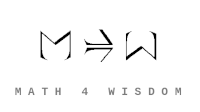- MathNotebook
- MathConcepts
- StudyMath
- Geometry
- Logic
- Bott periodicity
- CategoryTheory
- FieldWithOneElement
- MathDiscovery
- Math Connections
Epistemology
- m a t h 4 w i s d o m - g m a i l
- +370 607 27 665
- My work is in the Public Domain for all to share freely.
- 读物 书 影片 维基百科
Introduction E9F5FC
Questions FFFFC0
Software
I am interested in linguistic theories.
Reddit. What are some recent mind blowing theories in linguistics?
Indexical orders (Silverstein 2001) and indexical fields (Eckert 2008) (reading Silverstein 2001 is not recommended unless you're really into this kind of thing)
Enregisterment (Agha 2005) (Agha was a student of Silverstein at Chicago, so the same comment applies)
Rejection of the mental lexicon and recasting words as cues to meaning, rather than mapping onto meaning (e.g. Elman 2004, 2009). (Relately, recognition that sequential processing accounts for most, if not all, of syntactic processing without the need to hard-code syntactic structures, but I think Elman's work on this started sliiiightly before 30 y.a. so probably doesn't count)
Sequential learning as underlying chunking behaviour (Saffran, Aslin & Newport 1996, and widely taken up in all areas of linguistics since then)
Parsing as cue-based retrieval (Lewis & Vasisth 2005, 2008), the surprisal theory (Levy 2008, Smith & Levy 2014) and dependency locality theory (Gibson 2000) are all from within the last 20 years or so (constraint-based models, in fact, are only slightly older than 30 years AFAIK)
Many different accounts of phonetic and morphological reduction, e.g. the smooth signal redundancy hypothesis (Aylett & Turk 2004) and uniform information density (Frank & Jaeger 2008), arise from this period
Arnold's expectancy hypothesis (Arnold 1998) and Almor's informational load hypothesis (Almor 1999) are two of the latest additions to theories of reference production
Although Nosofsky's GCM was from the 80s, AFAIK the widespread uptake of exemplar-based models in linguistics is only in the last 20 years or so as well
Collostructional analysis as a method of investigating lexicogrammatical attraction (Stefanowitsch & Gries 2001)
The main methodological contributions of radical construction grammar (Croft 2001), including the foreshadowing in Dryer (1997) as well as the later refinement and promotion by Haspelmath (e.g. 2007, 2013)
The study of referential density (Bickel 2003) is the latest major addition to the inventory of referential pragmatic factors relevant to syntactic typology that I'm aware of
Insubordination has always been known in some way, but I think the intense research only started in Japan around 30 years ago and in the Western world only after Evans (2007) and Mithun (2008)
The study of stance marking and its grammaticalisation also originated in large part in Japan and spread throughout the world in the last 30 years
A more recent one: Himmelmann (2014), on the suffix preference, is likely to become a modern classic even if the explanation needs refinement later
Even more recently, mermaid constructions have become a focus of research (Tsunoda 2020)
Iterated learning as a paradigm originates from Kirby et al (2005), and while the computational model comes earlier I believe (not completely sure) that it's within the last 30 years too
